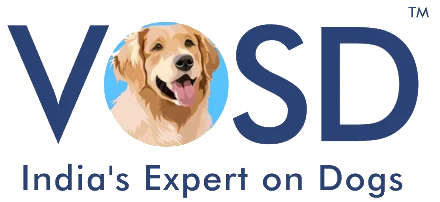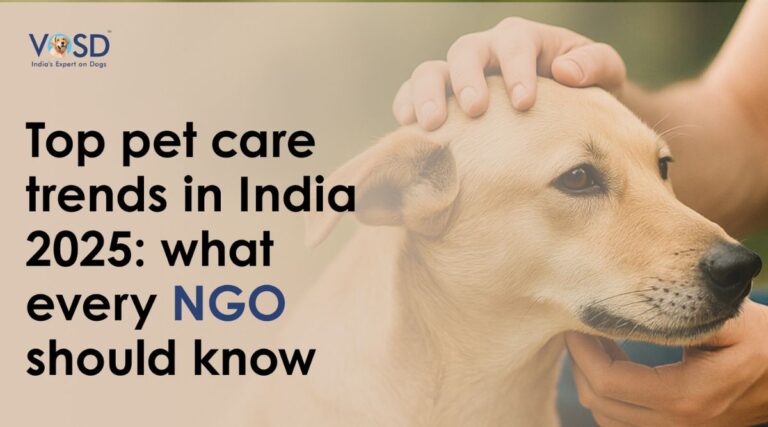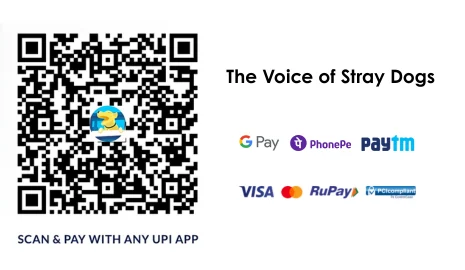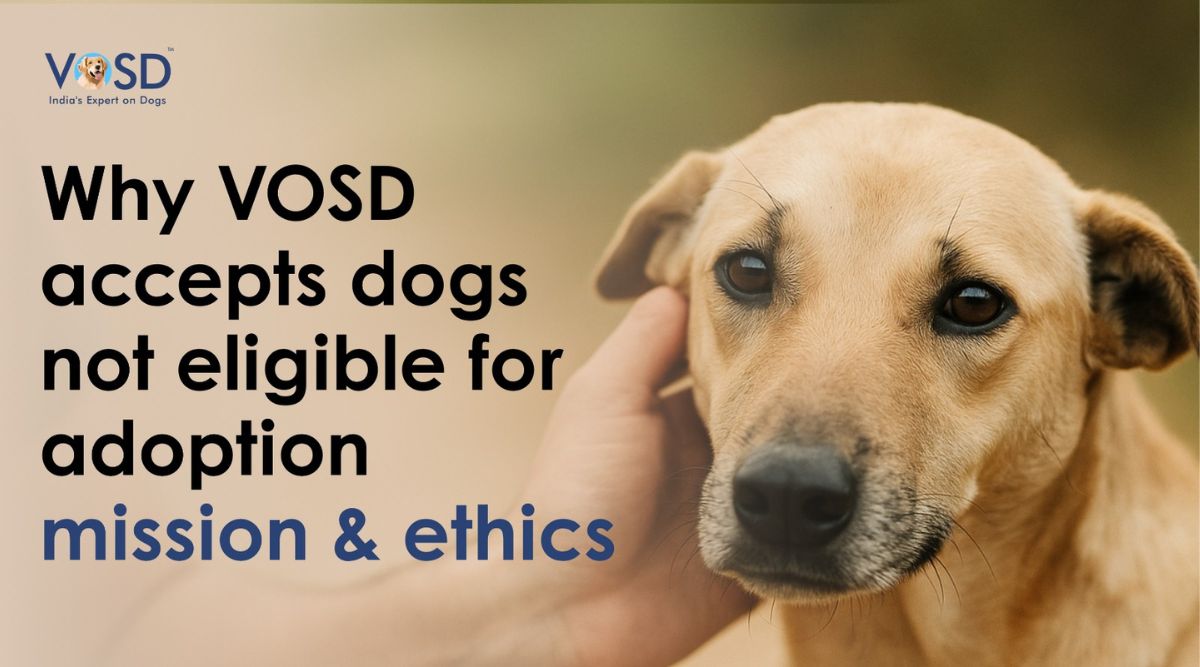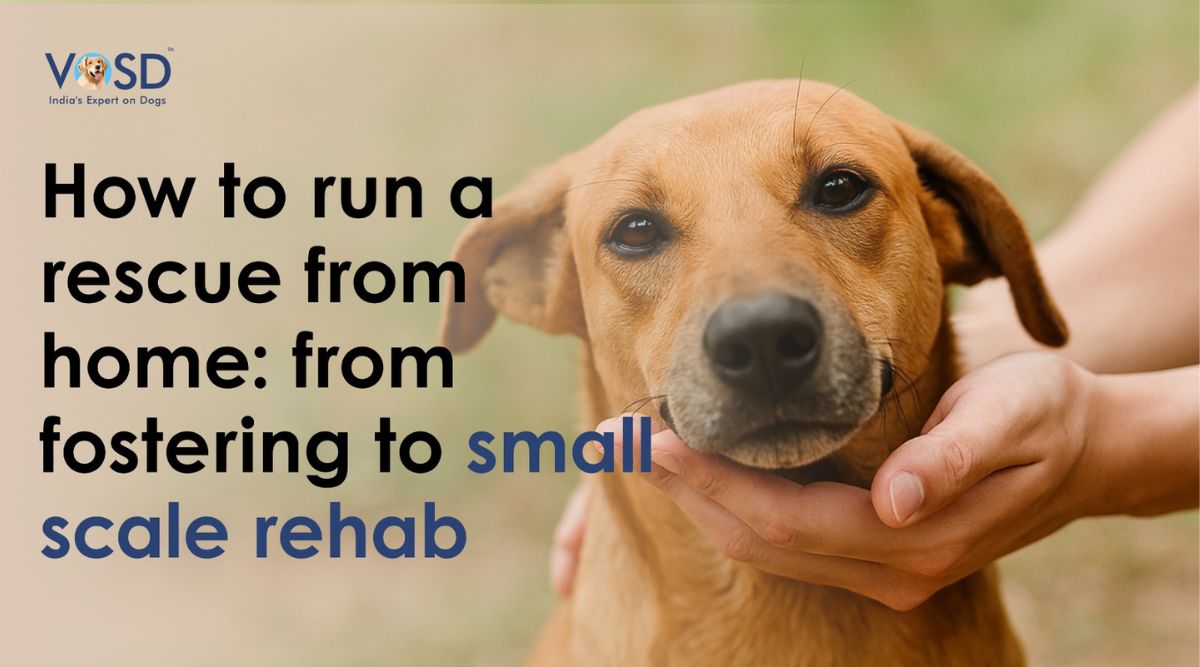Introduction: The Changing Face of Pet Care in India
Pet care in India has transformed over the last decade , evolving from feeding and sheltering to a full-fledged ecosystem focused on wellness, nutrition, and emotional health.
Urban families now view pets as family members, sparking a nationwide wave of pet humanization.
This shift has led to rapid growth in veterinary care, premium pet products, grooming, and even pet insurance. 2025 marks a new phase where technology, sustainability, and compassion converge to redefine care standards.
At the heart of this evolution are India’s animal welfare NGOs, bridging the gap between traditional rescue work and modern pet care. From sterilization drives to digital adoption programs, they are setting new benchmarks for responsible, humane care.
The Rise of Pet Humanization: More Than Just Pets
The pet humanization movement is redefining pet parenting in India. Families in cities like Bengaluru, Delhi, and Mumbai are investing in premium nutrition, grooming, and emotional wellness , treating pets as companions, not possessions.
For NGOs, this cultural shift is an opportunity to elevate standards:
- Design cleaner, more enriching shelter environments.
- Introduce play, socialization, and trust-building programs.
- Partner with ethical pet brands for better nutrition and hygiene.
By aligning with the growing pet wellness movement, NGOs can improve adoption rates and create better quality of life for rescued animals.
Digital Pet Care: Technology Reshaping the Sector
India’s pet care future is digital.
With the rise of pet telemedicine, owners can now access veterinary consultations online, reducing stress for animals while improving accessibility. Platforms like Vetic, Wiggles, and Supertails are leading this shift.
For NGOs, digital adoption is a game-changer:
- Use apps to manage rescues, fosters, and medical histories.
- Store vaccination records securely in the cloud.
- Host virtual adoption drives to expand reach.
Even in semi-urban regions, mobile vet clinics and digital tools are making animal care faster, safer, and more organized.
Learn how VOSD’s structured care programs integrate technology for consistent, transparent animal welfare.
Sustainable and Ethical Pet Care
Sustainability is becoming a defining feature of modern pet care. From biodegradable toys to solar-powered shelters, Indian pet parents are choosing eco-friendly products that reduce waste and support ethical brands.
NGOs can lead by example:
- Use solar panels or natural ventilation in shelters.
- Compost organic waste and minimize plastic use.A
- Partner with local artisans or green suppliers for eco-conscious materials.
VOSD’s sanctuary model emphasises responsibility toward both animals and the planet, proving that humane care and sustainability go hand in hand.
The Boom in Pet Nutrition and Healthcare
Nutrition is now central to preventive pet healthcare.
Pet parents are shifting from leftovers to scientifically balanced, breed-specific diets. The growing pet insurance market is making wellness more affordable and predictable.
NGOs can harness this trend by:
- Implementing nutritional recovery plans for malnourished rescues.
- Partnering with pet food startups for regular supply.
- Adopting preventive care practices in shelters.
Healthy animals recover faster, get adopted sooner, and live longer, improving overall welfare outcomes.
Behavior, Training, and Emotional Well-being
Modern pet care now includes mental health.
Indian pet parents increasingly seek training, enrichment, and behaviour therapy to reduce anxiety and aggression in their pets.
NGOs can apply this in shelters by:
- Introducing play therapy and structured socialization.
- Using positive reinforcement for trust-building.
- Offering behavioural advice to adopters post-rescue.
When emotional care becomes standard practice, rescued animals rebuild confidence and adjust more easily to new homes.
Community and Stray Animal Care Programs
India’s animal welfare model is shifting from rescue-based to community-driven.
The CNVR model (Catch-Neuter-Vaccinate-Release) has become the backbone of humane stray dog management across cities.
Effective CNVR programs in Mumbai, Delhi, and Bengaluru, often led by NGOs, have reduced street aggression and improved vaccination coverage. RWAs and local feeders now play a crucial role in maintaining these efforts.
Community participation ensures that every stray is vaccinated, monitored, and cared for safely, fostering coexistence rather than conflict.
Learn how VOSD’s lifetime care and rescue initiatives complement community CNVR work.
Partnerships Between NGOs, Startups, and Local Authorities
The future of pet welfare in India depends on collaboration.
NGOs, municipalities, and startups are working together to make animal care scalable and efficient.
Examples include:
- Startups offering digital tracking and rescue management systems.
- Pet brands donating supplies through CSR programs.
- Tech-enabled municipal drives for sterilization and vaccination.
By combining compassion with innovation, NGOs can access better tools, expand impact, and enhance transparency.
Regional Pet Care Trends Across India
Pet care trends vary by region:
- South India (Bengaluru, Chennai): Strong adoption networks and NGO collaboration.
- North India (Delhi, Chandigarh): Rise of pet grooming and premium services.
- West India (Mumbai, Pune): Growth in pet cafés, adoption camps, and outreach programs.
- Kerala: Government-supported sterilization and education initiatives.
Each region offers lessons in compassion, innovation, and adaptability.
Action Plan for NGOs in 2025
Here’s how NGOs can lead India’s pet care revolution:
- Adopt Digital Tools , Use apps for records, rescues, and donor engagement.
- Focus on Health and Enrichment , Prioritize nutrition, medical care, and behavioural programs.
- Collaborate with Startups and Governments , Scale CNVR and awareness drives.
- Engage Communities , Involve RWAs, schools, and volunteers in education and feeding.
- Go Green , Implement solar energy, composting, and sustainable sourcing.
- Measure and Share Impact , Track progress with data and transparency.
These steps combine empathy with efficiency , helping NGOs modernize while staying true to their mission.
Conclusion: The Future of Pet Welfare in India
India’s pet care transformation in 2025 blends compassion, data, and community action. From telemedicine and eco-friendly shelters to emotionally intelligent adoption programs, animal care is becoming smarter and kinder.
VOSD – The Voice of Stray Dogs stands as a national example of structured compassion, proving that care and innovation can coexist. NGOs that embrace digital systems, sustainability, and collaboration will lead India’s next phase of humane evolution.
The future of pet care isn’t about luxury, it’s about responsibility.
Together, we can make India a place where every pet and stray lives with safety, love, and dignity.
FAQ: Pet Care Trends and Animal Welfare in India 2025
What are the top pet care trends in India 2025?
Humanization, digital health, eco-conscious products, and advanced nutrition.
How are NGOs adapting to modern pet care?
By using digital tools, focusing on nutrition and mental health, and partnering with startups and municipalities for sterilisation and adoption programs.
Which cities lead India’s adoption efforts?
Bengaluru, Mumbai, Pune, and Delhi , all with strong NGO-government collaboration.
What’s the future of pet welfare in India?
Empathy powered by innovation. The goal is a compassionate, tech-enabled system of care for all animals.
